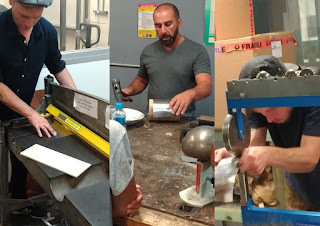It's our last class this week ... and the introduction to Assignment 3!
Assignment 3 is due on the 13th of June by 23:59: it's called Reflection.
 |
| Rabbit (1986), Jeff Koons |
You need to choose one of your projects and critically review it using images, video, text and drawings to reveal strengths, weaknesses and alternatives to your approach, techniques and tools.
You could approach this in three ways (separately on in combination):
Through contrast and comparison. Comparing and contrasting elements of your work as it developed over the semester with previous examples of your own work or the work of your classmates.
Through reflection on your discipline. How are the skills you've learned useful, not useful, challenging to previous was of doing things, changed your point of view regarding another discipline, similar or different to a classmate from the same or different discipline, etc. etc.?
Through demonstration. Having another attempt at something you were not so successful at previously or something you did well but could do faster or more efficiently the second (or 6th) time around.
Pay close attention to the Feedback and Review Sheet. Some of you fell down in assignment 1 because you didn't address the specific criteria outlined there. Ask any of the tutors on Wednesday if you have any questions regarding how best to address any of the areas you are being marked on.
Regards
Russell
Daniel
Martin
Gabe
















































